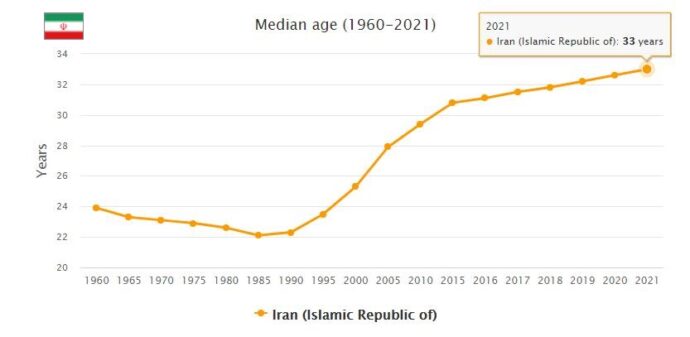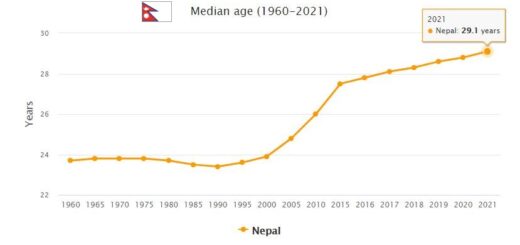Iran 2019
Yearbook 2019
Iran. Since the US terminated the 2015 Nuclear Energy Agreement on Iran’s Joint Comprehensive Plan of Action (JCPOA) in May 2018 and imposed sanctions on Iran in August 2018, the country’s economy has deteriorated – to the extent that in July it considered removing four zeros on their banknotes due to the depreciation of the currency. In November, 1 euro cost 46,000 rial. The deteriorating economy led to major protests during the autumn, partly due to shock increases in fuel prices (see below).
At the beginning of the year, the International Nuclear Energy Agency (IAEA) noted that Iran still fulfilled the terms of the Nuclear Energy Agreement, despite expanding its stocks of enriched uranium and heavy water. But in the spring, Iran decided to withdraw from parts of the agreement and partially resume the program. In May, Iran threatened to resume more parts of the program if a new agreement could not be reached within 60 days. It was also threatened to close the Strait of Hormuz in response to US sanctions also applying to countries that buy oil from Iran. The response from the United States was new sanctions. In July, the IAEA found that Iran has now exceeded its commitments in the agreement. According to the agreement, there was a limit of 250 kg of enriched uranium, but now it was more than 300 kg. This was confirmed by Iranian Foreign Minister Mohammed Javad Zarif.
- ABBREVIATIONFINDER.ORG: Click to see the meanings of 3-letter acronym and abbreviation of IRN in general and in geography as Iran in particular.
In November, the country announced several measures in its nuclear program that clearly violated the JCPOA agreement. The enrichment will be resumed in the Fordow underground facility, outside the city of Qom. However, the IAEA will have the opportunity for transparency.
The sanctions against Iran in the spring and summer led to what was becoming a serious international crisis. In May, several vessels were attacked outside the United Arab Emirates. According to the United States, the attack came from the Iranian Revolutionary Guard with the help of the huthir bells in Yemen. Since the US decided to send another 1,500 troops to the Middle East, Iran threatened to lower US ships and ships in the area. In June, the Norwegian-owned oil tanker Front Altair was attacked in the Gulf of Oman and started burning after a suspected torpedo attack from Iran. Iran denied all interference. However, the purpose of the attack was clear: to crush the oil supply to Europe and the United States. Another ship was attacked, the Japanese tanker Kokuka Courageous.
On June 20, Iran shot down an American drone – according to the United States, it was in international airspace, according to Iran in Iran. The downturn caused the tensions to increase dramatically. According to US President Donald Trump, he should have ordered an attack on Iran, but “ten minutes before the attack I stopped it”.
The conflict with oil tankers continued. The reason was simple: to prevent the transport of oil, smuggled or smuggled. In early July, Britain seized the Iranian oil tanker Grace 1 in Gibraltar, which is British territory. A few weeks later, July 19, Iran stopped a British-flagged ship in the Hormuz Strait. The ship, Stena Impero, belonged to the Swedish shipping company Stena Bulk. A short hour later, the British-owned Liberia-flagged ship Mesdar was also seized in the Strait of Hormuz, but was later released. It was not until late September that Stena Impero could leave the Iranian port city of Bandar-e Abbas.
To solve the problem of the hijacked and attacked merchant vessels, the United States proposed that an international intervention force be formed in the Hormuz Strait. Neither France nor Germany, nor any other European country, appeared interested except for the UK’s new government, and in early August it was announced that the British Navy would join.
The conflict with the United States was not less complicated by the announcement by Iran in early July that it had unveiled a spy network linked to the US CIA. According to Iranian media, there were 17 Iranians arrested in 2018-19 who were already sentenced. They have been employed in “sensitive and crucial central locations” and were recruited by the CIA when applying for a visa to the United States. President Donald Trump dismissed it all as a lie and propaganda.
In mid-November, violent protests erupted in the country since the government decided to shock gasoline prices by 200%. At least 143 people were confirmed dead at the end of the month (however, the figure may be significantly higher) and thousands arrested. President Hassan Rohani said it was “foreign enemies” behind the protests. However, the country’s highest religious leader, Ayatollah Ali Khamenei, showed a keen understanding that people were upset by the price increase, but he blamed the “hooligans” and said that “the counter-revolution and Iran’s enemies have always supported sabotage and disruption of security”. At the end of the year, it was found that 1,500 people had died in the gasoline protests – among them at least 17 teenagers and 400 women.
In mid-February, at least 30 soldiers in the Revolutionary Guard’s elite forces were killed by a bombing in Baluchistan province in southeastern Iran, near the Pakistan border. Armed Sunni group Jaish al-Adl took on the deed. Human rights activist and lawyer Nasrin Sotoudeh was sentenced in February to prison for 38 years, including charges of violating the country’s security laws, and to 148 lashes. Sotoudeh has long worked for the abolition of the death penalty and has also represented women who objected to the order that women must wear headscarves. In 2010-13, she was jailed for conspiring against the state. Sotoudeh received the European Parliament’s Sakharov Prize 2012.
At the end of March, Iran suffered extensive flooding. At least 76 people died when 25 provinces and more than 4,400 villages were affected. According to the Minister of Transport, 14,000 kilometers of road should have been damaged and 725 bridges completely destroyed. In addition, the rainfall caused 400 landslides and 141 flooded rivers. According to calculations, the total cost of the devastation would amount to SEK 24 billion.
In February, the country’s foreign minister Zarif announced that he would step down and apologize for “all the shortcomings”. However, he did not motivate why he would step down. However, President Hassan Rohani did not approve of his resignation application because it “conflicts with the country’s interests”. Zarif is still the country’s foreign minister.
Population 2019
According to CountryAAH, the population of Iran in 2019 was 82,913,795, ranking number 19 in the world. The population growth rate was 1.360% yearly, and the population density was 50.9127 people per km2.



